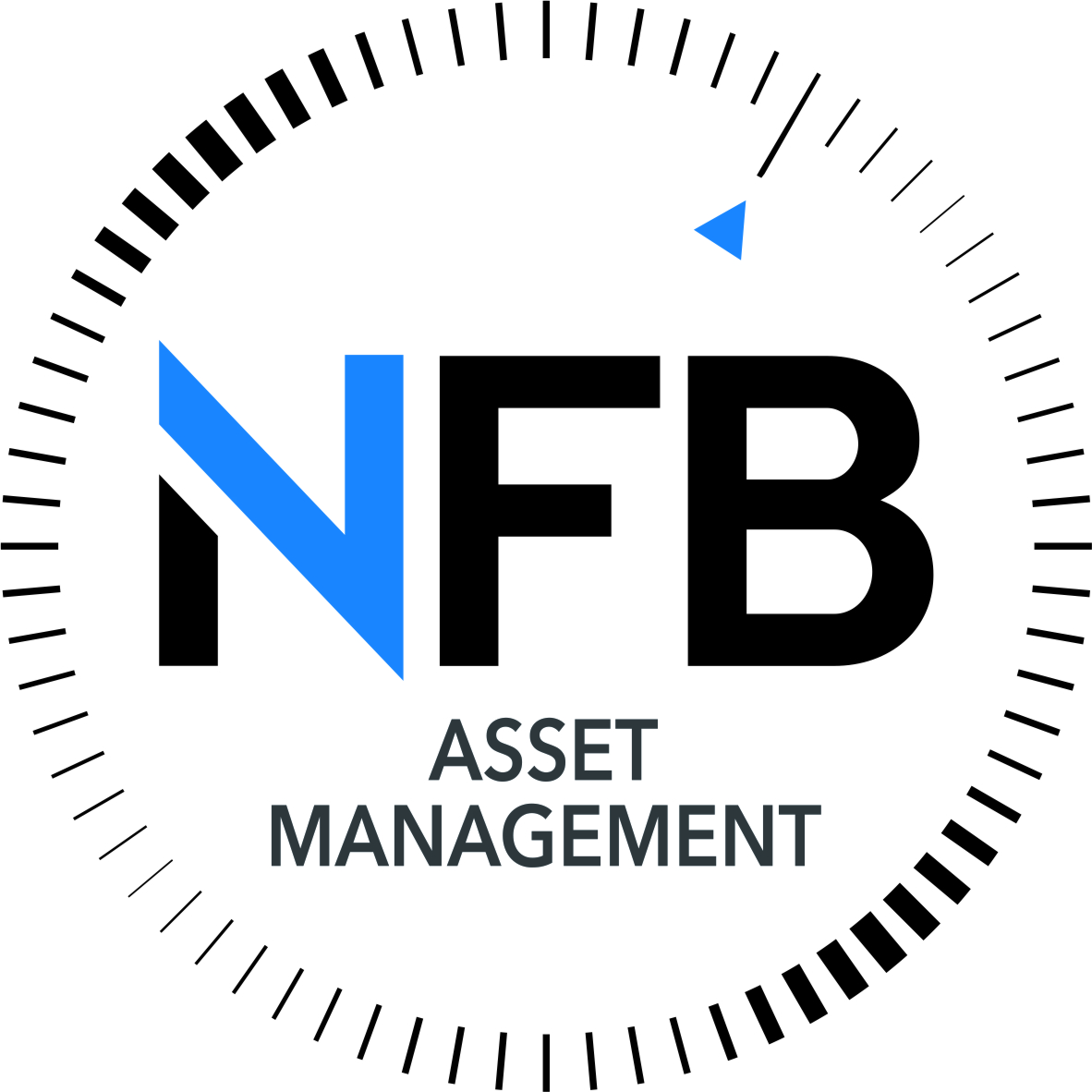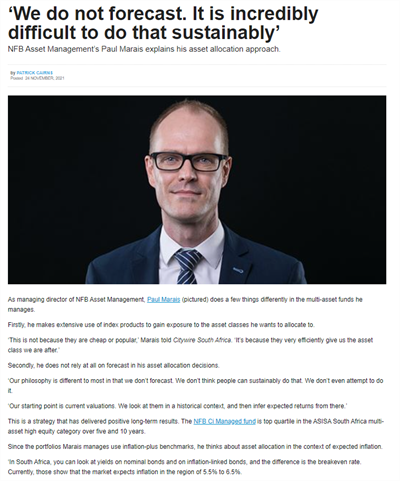NFB Asset Management's approach to asset allocation
‘We do not forecast. It is incredibly difficult to do that sustainably’


As managing director of NFB Asset Management, Paul Marais does a few things differently in the multi-asset funds he manages.
Firstly, he makes extensive use of index products to gain exposure to the asset classes he wants to allocate to.
‘This is not because they are cheap or popular,’ Marais told Citywire South Africa. ‘It’s because they very efficiently give us the asset class we are after.’
Secondly, he does not rely at all on forecast in his asset allocation decisions.
‘Our philosophy is different to most in that we don’t forecast. We don’t think people can sustainably do that. We don’t even attempt to do it.
‘Our starting point is current valuations. We look at them in a historical context, and then infer expected returns from there.’
This is a strategy that has delivered positive long-term results. The NFB Ci Managed fund is top quartile in the ASISA South Africa multi-asset high equity category over five and 10 years.
Since the portfolios Marais manages use inflation-plus benchmarks, he thinks about asset allocation in the context of expected inflation.
‘In South Africa, you can look at yields on nominal bonds and on inflation-linked bonds, and the difference is the breakeven rate. Currently, those show that the market expects inflation in the region of 5.5% to 6.5%.
‘Even moving to 6.5% from where we are now is not a lot, so while there is probably a bit more to come, we don’t think we need to worry too much about an acceleration in inflation. We don’t see inflation at 7% or 8%, which would worry us.’
Asset class viewsThis also gives Marais some confidence in allocating to nominal bonds.
‘If you look at the yield on a 10-year nominal bond versus a three-month NCD [Negotiable Certificate of Deposit], you get a sense of the steepness of the curve. You are getting a 600bps pick-up. The curve had to steepen when the Reserve Bank cut rates going into Covid, but it’s stuck there. So, partly because long rates haven’t come in and short rates haven’t moved much, there is quite a lot of return for taking duration risk.’
This has informed a position of being positive on government bonds for more than a year now.
‘It’s a trade we continue to be interested in because we don’t see long-end rates blowing out. There is some risk that rates are going to go up at the short end, but if you listen to Reserve Bank commentary, it doesn’t sound like they are going up tomorrow.’
Marais’ view of local property is far less positive.
‘It’s done extremely well in the last year. We would have loved to have more of it, but it’s unclear how that is going to pan out.
‘We are not trying to make a call here on how working from home affects office supply in future, or anything like that. We are just looking at valuation and how dividend yield in the sector has improved. It’s up to 6.2% now, but historically it’s been 7.4%. We would need to see it improve more before we allocate more.’
Marais believes the most likely way it would do so is by share prices coming off. He, therefore, remains cautious.
‘We’re not going to be allocating to property any time soon, despite how comfortable it feels based on how well it’s done.’
A view on valuations
With the Johannesburg Stock Exchange at or near record highs, one might assume that a valuation-driven investor would be cautious about local equities too. However, Marais has a much more nuanced view.
‘When earnings were decimated during Covid, P/E [price-to-earnings] ratios obviously expanded. Now that earnings are coming through, P/Es are improving.
‘You might think that with the market at a record high, you don’t want to buy. But valuations have improved so much that, if anything, we’re thinking of buying more local equities.’
Historically, subsequent five-year returns from a starting P/E of just under 12 for the local market have been 10% to 25%.
‘It looks like one of the better times to buy,’ Marais said.
‘But it’s not a slam dunk. Those returns are nominal, so you need to adjust for inflation at that time. A return of 10%, if inflation was 8%, means you only did 2% real. We have to factor that in.
‘So, we should be curious about buying local equities, but it’s not a given that we should.’
The NFB Ci Managed fund currently has 44% of its portfolio in local equities, expressed through a holding in the CoreShares Top 50 exchange-traded fund and equity swaps with similar exposure. Marais is happy to take this exclusively large-cap exposure, despite the recent broadening of the market.
‘If the growth continues to happen from small and mid-caps, we will miss out a bit, but our view is that it doesn’t really matter what index you choose. What’s more important is that you are in equities.
‘If anything, I’m thinking maybe we don’t have enough large caps, just from an asset allocation point of view, saying that the market is quite well priced now.
‘But it’s not that obvious. There are enough negative views out there not to make that call. But just looking at the data, you need to be looking at this a bit more deeply.’
 |
This article was written by Patrick Cairns and published exclusively for Citywire 24 November 2021, you can access the original here. |













